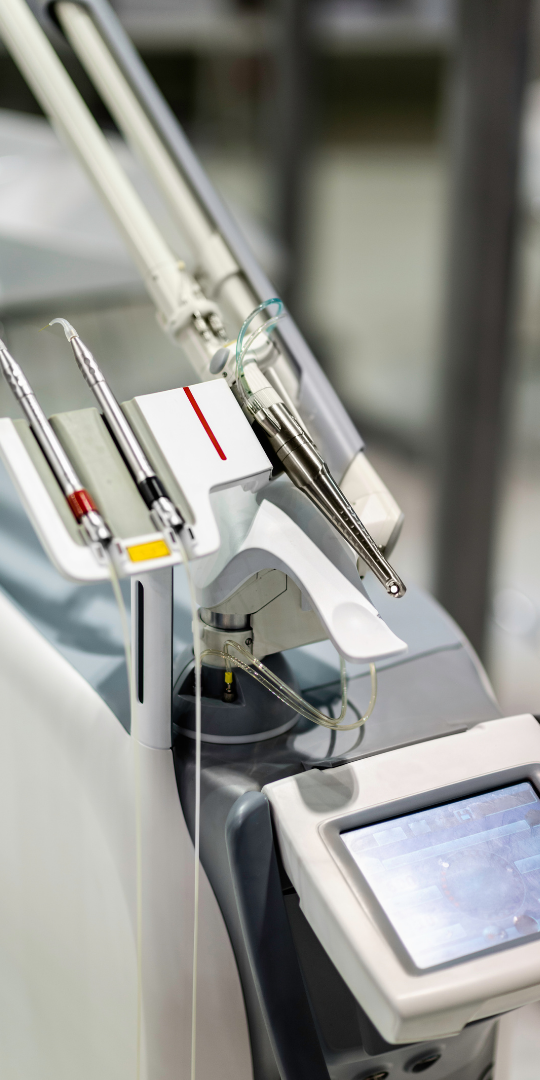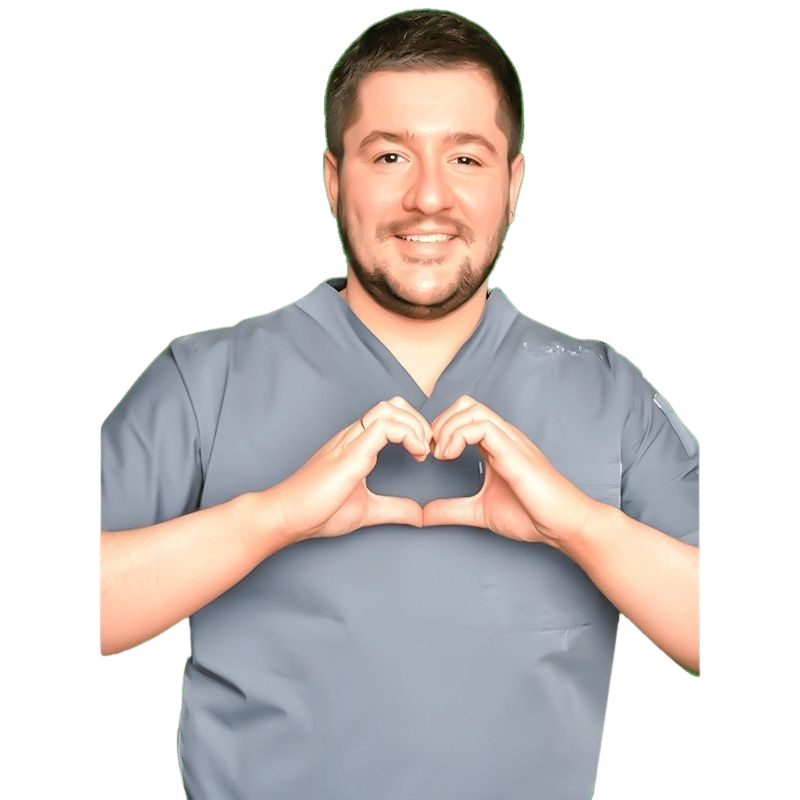Laser Dental Treatment
Make an Appointment
Online Schedule
IntroductionLaser Dental Treatment
The laser device is interpreted as light amplification by the emission of stimulated radiation. This device, built on the principles of quantum mechanics, is used in many sectors and is the most preferred method in the health sector. Especially in dental treatments, this method is used to break up the tissue by evaporating the water molecules in the tissues.
How is Laser Dental Treatment Performed?
Laser dental treatment; is preferred in gingival treatments, caries treatments, and root canal treatments. In root canal treatments, laser shaping and sterilization are provided in the canals. In the meantime, the teeth can be anesthetized with the special technique of the laser without the need for a needle against the pain that may occur. Recovery is fast, as good sterilization is provided during root canal treatment. The laser is roughened to clean caries in the teeth and to hold the composite fillings to the teeth more strongly. The biggest advantage of laser caries removal is the absence of vibration caused by rotary instruments and the associated discomfort. Since laser devices work by vaporizing the applied tissue, the patient does not feel discomfort or pain while cleaning the bruise.
What is Laser Implant Application?
Three-dimensional tomography of the patient is taken before the laser implant application. Thus, detailed information about the width and depth of the bone tissue where the implant will be placed is obtained. In some stages of implant applications, a laser is used to open the gingiva. In this way, it is possible to intervene without bleeding and without incisions and stitches. This method is called laser implant application.
What is Laser Filling? How is it done?
The laser filling method, which is called composite in the medical language, is also called an aesthetic filling. This process is not applied with a real laser beam. There are halogen or LED light devices adjusted to a certain wavelength so that the actual applied composite material can be harder. Real dental laser Delight works on hard tissue and does not affect soft tissue. Thus, the loss of healthy tissue is prevented. Especially with the developing technology in recent years, laser fillings, which are much better in terms of durability, aesthetics, and health, are preferred. Since laser filling can be done in a single session, there is no loss of time. After the application, the teeth can be easily used immediately.

IntroductionCan AFT and Herpes Also Be Treated With Laser?
Herpetic lesions, also called herpetic lesions, usually heal on their own within a few days and disappear. However, if it is painful or uncomfortable, it can be treated. Laser treatment is the most effective method to get rid of herpes at this point. If the possibility of herpes is felt, it is prevented from coming out if an appointment is made and treated immediately. If it is desired to have it treated after it is removed, the laser dries herpes, reducing the discomfort and allowing the area to heal faster. The gum disease called aphtha is dried with the same methods and the healing process is accelerated.
What are the Advantages of Laser in Smile Design?
Bleeding does not occur while shaping the gums with a laser. Meanwhile, anesthesia is used much less. Tissue healing is faster. You can proceed immediately to the next steps. In this way, time is saved and transactions proceed faster. Considering these features, laser treatment is more advantageous than other classical methods in providing smile aesthetics.
You can benefit from laser treatment procedures in all Turquoisedent branches where the latest technologies are used.
How Long Does Laser Dental Treatment Take?
Laser dental treatment is shaped according to the treatment to be applied to the tooth. If the area to be laser treated will be treated in one day, the duration will be 1 day.
Is Laser Dental Treatment Reliable?
There is no harm in doing dental treatment with a laser. While it can be used easily in adults, it can be used in children as well. The only consideration in the treatment of children is; There is no damage to the teeth that constantly erupt from the bottom. The laser, which does not harm teeth and gums, is also used safely in dental bone operations. While working on a tissue with the laser, there is no risk of damaging another tissue.








